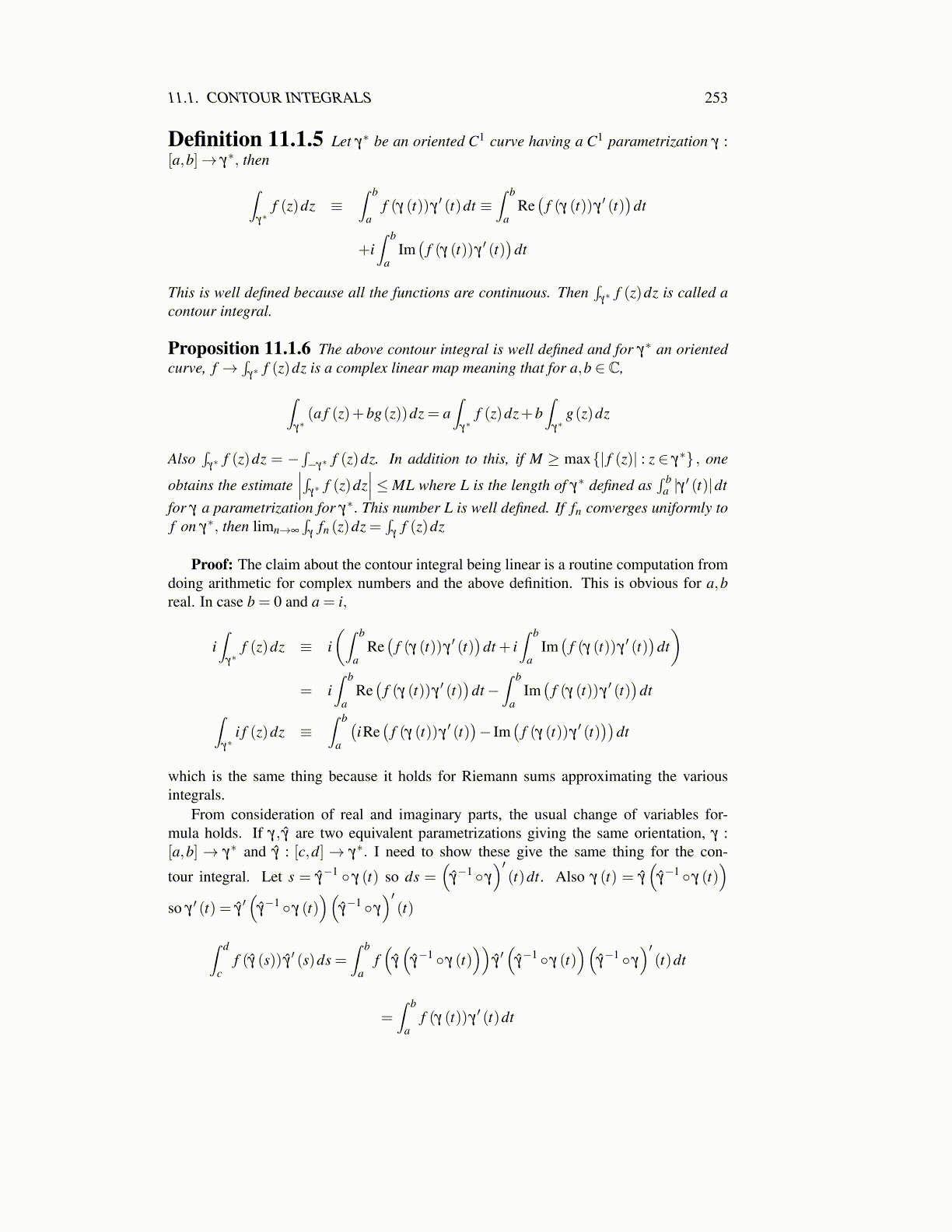
11.2. CAUCHY GOURSAT, CAUCHY INTEGRAL THEOREM 253
Many of these theorems in this section were first done by Cauchy using a version ofGreen’s theorem which is not discussed in this book because it is on functions of onevariable. Later, this other approach presented here was formulated by Goursat.
If you have two points in C, z1 and z2, you can consider γ (t) ≡ z1 + t (z2− z1) fort ∈ [0,1] to obtain a smooth curve from z1 to z2. More generally, if z1, · · · ,zm are points inC you can obtain a piecewise smooth curve from z1 to zm which consists of first going fromz1 to z2 and then from z2 to z3 and so on, till in the end one goes from zm−1 to zm providedit does not intersect itself. Denote this piecewise linear curve as γ (z1, · · · ,zm) . Now let Tbe a triangle with vertices z1,z2 and z3 encountered in the counter clockwise direction asshown.
z1 z2
z3
Denote by∫
∂T f (z)dz, the expression,∫
γ(z1,z2,z3,z1)f (z)dz. Consider the following pic-
ture.
TT 11
T 12T 1
3 T 14z1 z2
z3
Thus ∫∂T
f (z)dz =4
∑k=1
∫∂T 1
k
f (z)dz. (11.1)
On the “inside lines” the integrals cancel because there are two integrals going in oppositedirections for each of these inside lines.
Theorem 11.2.3 (Cauchy Goursat) Let f : Ω→C, where Ω is an open subset of Chave the property that f ′ (z) exists for all z ∈Ω and let T be a triangle contained in Ω withthe inside of the triangle also contained in Ω. Then
∫∂T f (w)dw = 0.
Proof: Suppose not. Then∣∣∫
∂T f (w)dw∣∣= α ̸= 0. From 11.1 it follows
α ≤4
∑k=1
∣∣∣∣∫∂T 1
k
f (w)dw∣∣∣∣
and so for at least one of these T 1k , denoted from now on as T1,
∣∣∣∫∂T1f (w)dw
∣∣∣ ≥ α
4 . Nowlet T1 play the same role as T . Subdivide as in the above picture, and obtain T2 such that∣∣∣∫∂T2
f (w)dw∣∣∣ ≥ α
42 . Continue in this way, obtaining a sequence of triangles, diam meansdiameter. It would be the length of the longest side.
Tk ⊇ Tk+1,diam(Tk)≤ diam(T )2−k,
and∣∣∣∫∂Tk
f (w)dw∣∣∣≥ α
4k .
If you pick zk ∈ Tk, then {zk} is a Cauchy sequence converging to some z∈C. However,each of these triangles is a closed set so z∈ Tk for each k. Thus z∈∩∞
k=1Tk. By assumption,f ′ (z) exists. Therefore, for all k large enough,∫
∂Tk
f (w)dw =∫
∂Tk
(f (z)+ f ′ (z)(w− z)+o(w− z)
)dw